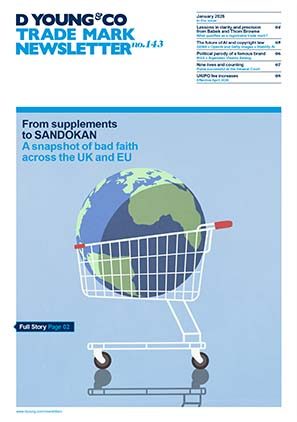Certification marks: Manuka not sweet enough for registration
The Manuka Honey Appellation Society (applicant) was the owner of a pending certification mark for MANUKA HONEY in respect of goods in class 30, claiming priority from a New Zealand certification mark.
The Australian Manuka Honey Association (opponent) opposed, arguing the sign was descriptive, devoid of distinctive character and generic. It claimed the mark described the type of honey being offered, for example, honey from the Manuka tree, and could not differentiate between goods that are certified by the applicant and goods that are not certified but that still may lawfully be labelled MANUKA HONEY and produced outside of New Zealand. It was further suggested that the sign was customarily used in the honey trade to describe honey made from the Manuka tree, irrespective of where it was produced and could not therefore guarantee that the products certified only originated from New Zealand.
The applicant argued the term was not common in the UK and the mark was able to distinguish goods certified from those which were not. It argued that because the sign was a certification mark, it did not need to remain available for use throughout the honey industry generally.
Further, the applicant alleged the sign had acquired distinctive character in the UK.
Decision
The hearing officer upheld the opposition and rejected the application, holding that the assessment of a certification mark must be whether the sign can distinguish goods which are certified from those which are not – rather than whether it can guarantee trade origin (the usual test for ordinary trade marks). The question is whether MANUKA HONEY designated a characteristic of the goods, and if so, whether the relevant public been educated to perceive the sign as designating goods which are certified, from those which are not. A certification mark must contain “certification-ness”, that is, an indication (inherently or otherwise) that the sign indicates that the goods are certified.
The hearing officer found that whilst MANUKA was a Maori word it was readily understood by UK consumers as describing a type of honey. Therefore, they would recognise the descriptive meaning of the word.
Further, and contrary to the applicant’s arguments, the evidence showed the Manuka tree was present in places outside of New Zealand, such as in Australia, and even here in England - even the Foods Standards Agency believed that Manuka honey could derive from Australia or New Zealand and not New Zealand exclusively.
Therefore, the hearing officer found that the sign MANUKA HONEY was not inherently capable of differentiating between honey that was certified and honey that was not based on:
- there being previous use of the term MANUKA HONEY in connection with other honeys
- there being nothing in the sign itself to indicate “certification-ness”
- use of the term having led to the term being perceived as descriptive
- there being nothing on the packaging to show that MANUKA HONEY only derives from New Zealand, and
- evidence which showed consumer expectation that MANUKA HONEY would derive from New Zealand or Australia (at the least).
In light of the above, the grounds of opposition based on descriptiveness and non-distinctiveness were upheld.
The hearing officer then rejected the applicant’s claim the mark had acquired distinctive character. Whilst there had been substantial use of MANUKA HONEY in the UK, the hearing officer felt that the evidence demonstrated a mixed level of understanding in the UK of what MANUKA HONEY was and it would be unfair to allow New Zealand producers to monopolise the sign by granting registration. Therefore, at the relevant date, the sign did not benefit from acquired distinctive character and could not be accepted on this ground.
As for the ground of opposition based on whether a sign is customary in trade, the hearing officer held that this depends on the expectations of the average consumer who is reasonably well informed and observant as well as use in trade. The evidence showed that in the honey industry, content on packaging was usually presented as [brand] [type] [honey] and MANUKA was generally shown as the type of product. Therefore, the sign MANUKA HONEY had become customary in trade and this ground of opposition was also successful.
In short
This case serves as a useful reminder of how the registrability of a certification mark differs to ordinary trade marks. Whilst the test for acceptance of an ordinary trade mark is whether the sign denotes trade origin for the product or services it seeks to protect, the test for a certification mark is whether the sign can distinguish certified goods from non-certified goods. If it cannot, and there is nothing within the sign itself to indicate “certification-ness”, it should not be registered.
Case details at a glance
O-899-21 certification trade mark application no. 31502620 by Manuka Honey Appellation Society incorporated and opposition thereto under No. 413837 by Australian Manuka Honey Association LTD.
